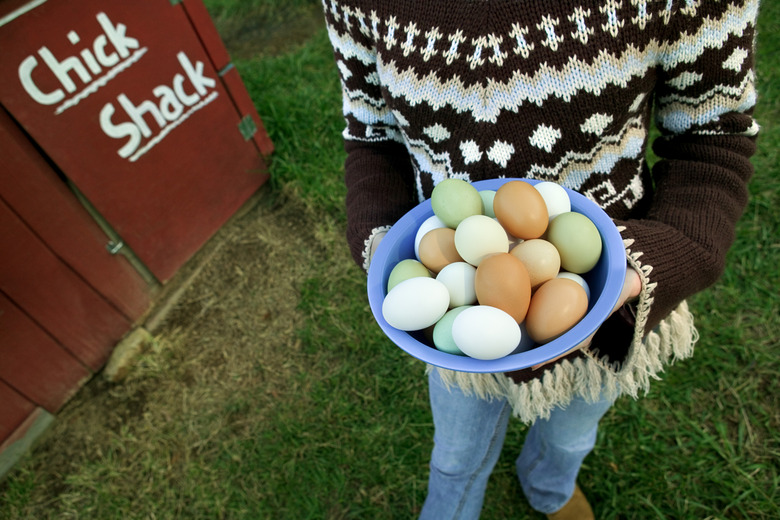Definition Of A Poultry Integrator
In 1999, Americans ate 95 pounds of poultry and 258 eggs on average. Until the 1950s, chickens were raised outdoors, but today's poultry farms involve 20,000 to 100,000 birds raised together in confined buildings. Poultry integration is a form of contract farming. Poultry integrators hire farms to raise chickens. Once the chickens are fully grown, the farmers are paid and the chickens or eggs are sold to the final market.
In 1999, Americans ate 95 pounds of poultry and 258 eggs on average. Until the 1950s, chickens were raised outdoors, but today's poultry farms involve 20,000 to 100,000 birds raised together in confined buildings. Poultry integration is a form of contract farming. Poultry integrators hire farms to raise chickens. Once the chickens are fully grown, the farmers are paid and the chickens or eggs are sold to the final market.
Integrator Provisions
Farmers are given the chicks, chicken food, vaccinations and support for the chickens' health, including nutrient supplements like vitamin D replacement. Integrators visit the farms to check on the chickens. They check bird mortality and growth. The birds are returned to the integrators after they are grown or after six weeks if they will be used for egg production, and the farmers are paid for their services.
- In 1999, Americans ate 95 pounds of poultry and 258 eggs on average.
- The birds are returned to the integrators after they are grown or after six weeks if they will be used for egg production, and the farmers are paid for their services.
Contractor's Requirements
Farmers who are contracted must build facilities to the specifications of the integrator. The farm is responsible for all of the costs associated with building facilities. If the integrators require upgrades, such as feeding systems, the farmers must take on this expense also.
Contracts and Loans
Integrators do not compete for farm contracts. If a farm is contracted by one integrator, other integrators do not try to get the farm to work with them. In fact, according to Agfax.com, when an integrator is fired or a contract is not renewed, other integrators will not hire the farm that is released from its contract. Also, farms whose contracts are not renewed still have to repay the loans for any upgrades the integrator has required.
- Farmers who are contracted must build facilities to the specifications of the integrator.
- In fact, according to Agfax.com, when an integrator is fired or a contract is not renewed, other integrators will not hire the farm that is released from its contract.
Advantages and Disadvantages
According to the National Chicken Council, the advantages of vertically integrated poultry farming include more efficient production and improved chicken health. The system also brings chicken to market all year. Most farm families don't get all of their income from chickens, according to the council, but typical earnings per farm were $50,000 to $75,000 annually as of 2012. Although the council considers this a reasonable return, not all farmers agree. According to Farm Aid, some contract farmers in Arkansas never received a per-pound pay increase over 25 years in the industry. They also stayed continually in debt to make required improvements to their facilities.
